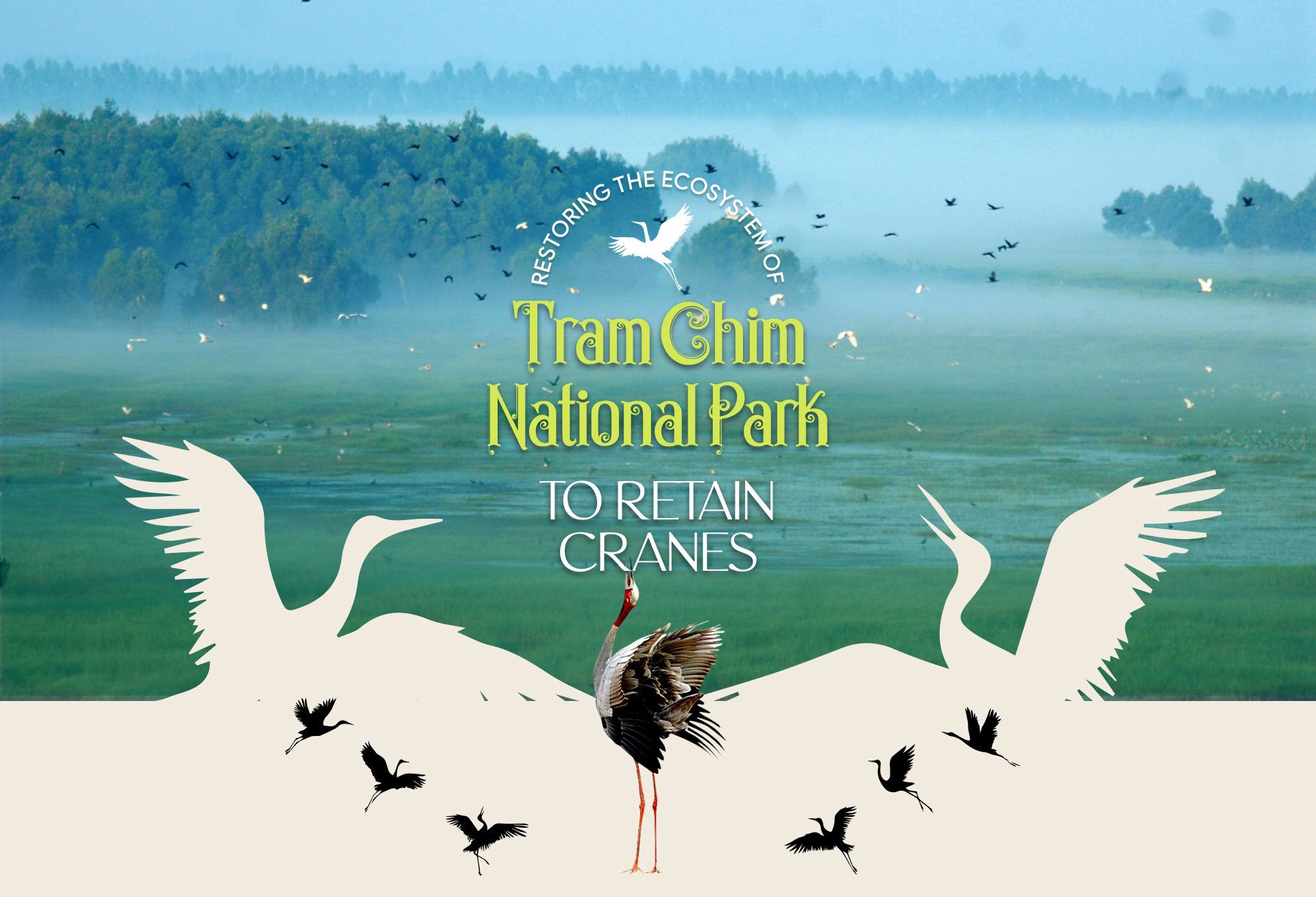
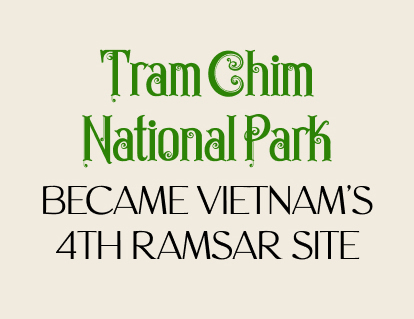
Referring to Dong Thap is the mention of fragrant lotus ponds, the poetic beauty of the Sa Dec flower garden, or the vast rice fields with stork wings flying. It is so rustic and poetic, but that is not enough to say about this rustic Southwestern river place. Dong Thap also appears with an extremely pristine image, somewhat more lively when coming to Tram Chim National Park and listening to the sounds of wild nature.
If the North is famous for Cuc Phuong National Park and the South is famous for Nam Cat Tien old forest, then the river region of Dong Thap is extremely proud to own Tram Chim National Park. Tram Chim National Park is located in the core area of Dong Thap Muoi, Tam Nong district, Dong Thap province, with a total area of 7,500 hectares within the boundaries of five communes of Tan Cong Sinh, Phu Duc, Phu Hiep, Phu Thanh B, and Phu Tho, and Tram Chim town. The total population in the area is over 30,000 people.
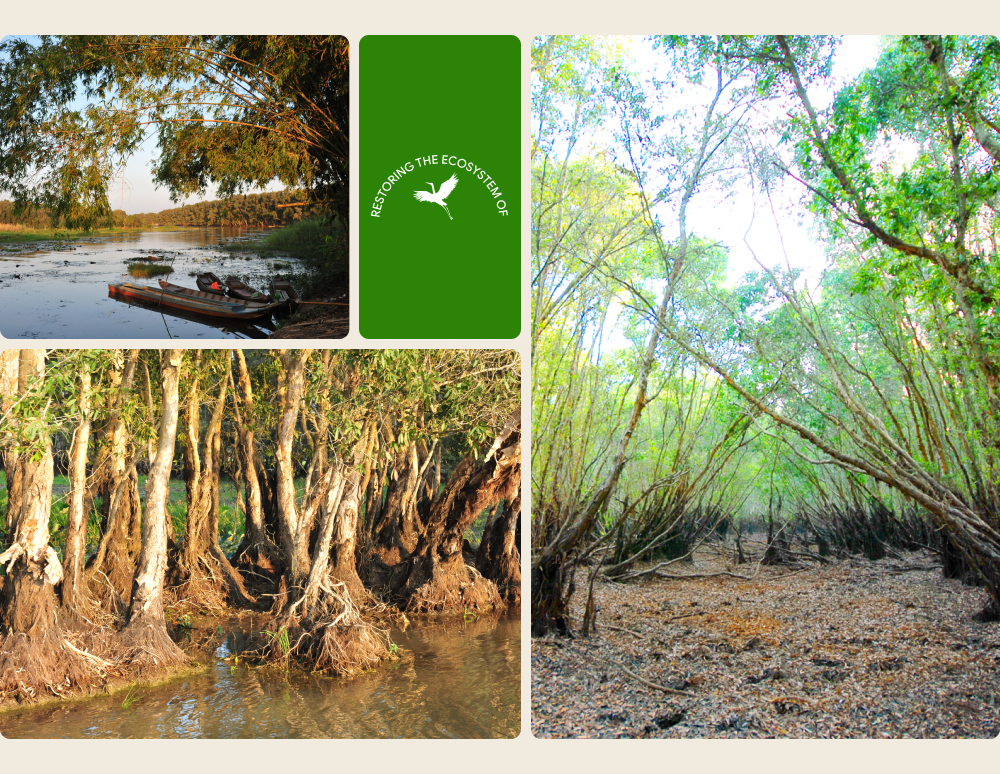
Tram Chim National Park is a wetland area that is also considered a freshwater storage bag, effectively serving the Mekong Delta people in agricultural production. Particularly, Tram Chim National Park is also ranked in the important special-use forest system of Vietnam. This place stands out with its rich ecosystem and unique natural landscape and possesses many rare bird species, such as Sarus cranes. The abundance of flora and fauna has created a rich and unique natural landscape for Tram Chim National Park.
Regarding the history of Tram Chim National Park, in 1985, Tram Chim was established by the Dong Thap Provincial People's Committee under the name Tram Chim Afforestation and Fishery Company with the purpose of growing Melaleuca, exploiting aquatic products, and preserving a part of the image of ancient Dong Thap Muoi. Among them, the species of red-crowned cranes (or sarus cranes) was rediscovered in Tram Chim Park. In 1991, Tram Chim became Tram Chim Nature Reserve at the provincial level to preserve the Sarus crane species. In 1994, this place became Tram Chim Nature Reserve at the national level according to the Prime Minister's Decision No. 47/TTg dated February 2, 1994, accompanied by Circular No. 4991/KGVX, with an area of 7,500 hectares.
In 1998, this place became Tram Chim National Park according to the Prime Minister's Decision No. 253/1998/QD-TTg dated December 29, 1998. On May 22, 2012, Tram Chim National Park (Dong Thap) was recognized by the Ramsar Convention Secretariat as a Ramsar site in the world. This is Vietnam's 4th Ramsar site and the world's 2,000th Ramsar site.
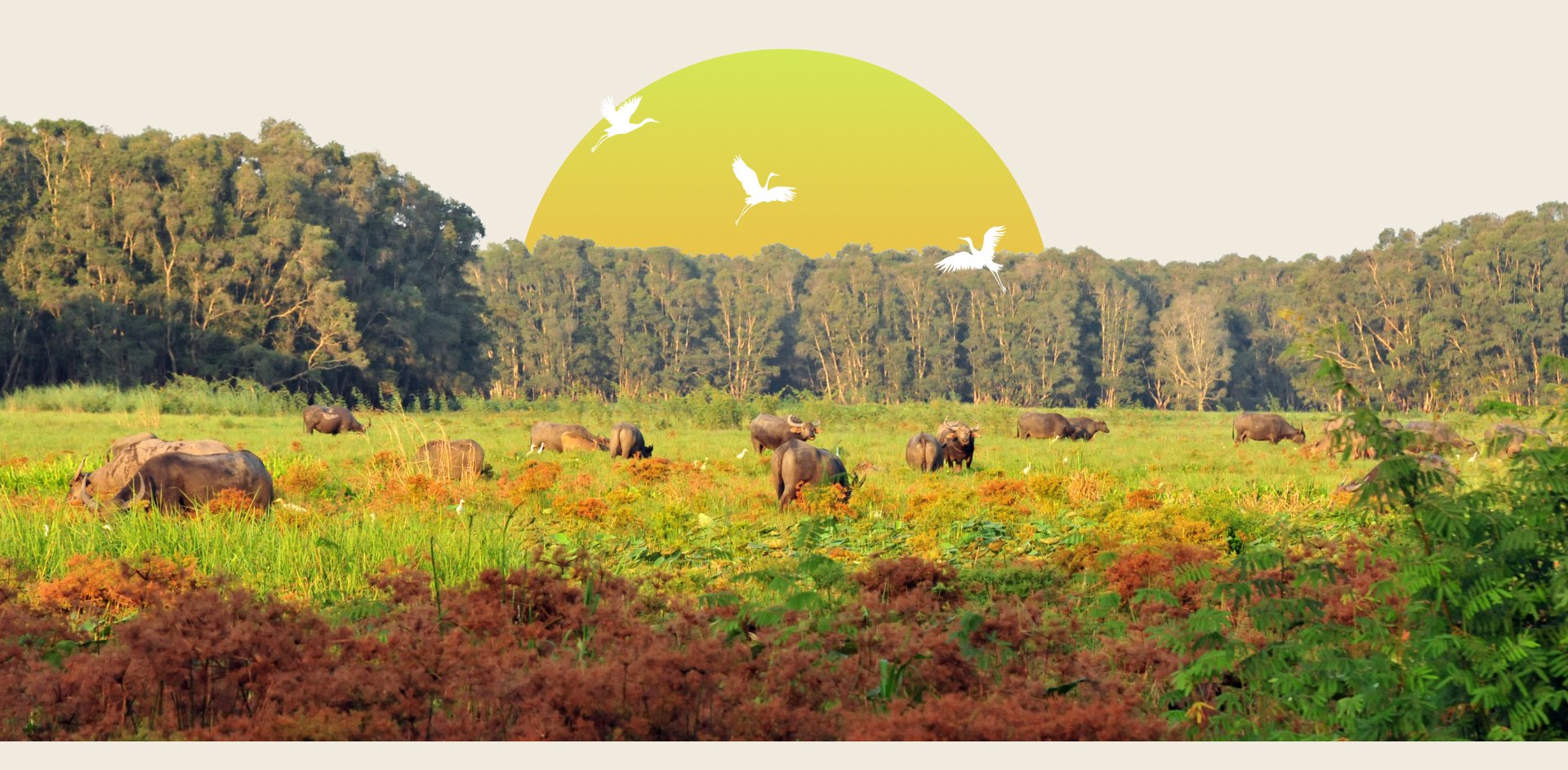
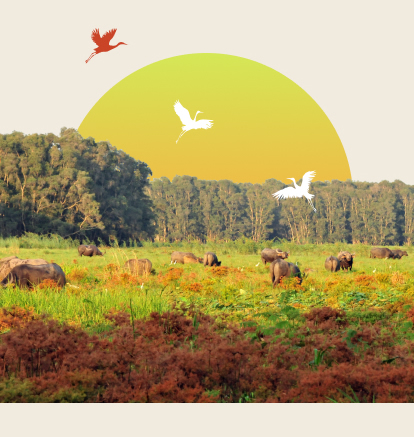
Tram Chim National Park is bestowed by nature as the green lung of this land. It is from there that Tram Chim National Park has been increasingly developed and has become one of the eco-tourism destinations in Dong Thap. With beautiful, peaceful natural scenery and a fresh, airy atmosphere, Tram Chim National Park will definitely bring wonderful experiences.
It can be said that Tram Chim National Park, which is a land of "six months the fields are dry and the grass burns, six months the fields are flooded with white water," is a place for the development of rich vegetation with more than 130 different species. The fauna here stands out with an abundant water bird system, including 233 species belonging to 25 genera and 49 families. Of these, 88% are found in the dry season, accounting for ¼ of the total number of bird species discovered in Vietnam. And especially the Sarus crane species, the largest in the crane family, is an invaluable natural asset of Tram Chim National Park in the Land of Pink Lotus.
Tram Chim National Park is a wetland area ranked in Vietnam's special-use forest system. There are many precious bird species here, especially the red-crowned crane, an extremely rare bird species listed in the Red Book that is being preserved.


The Project for Conservation and Development of Sarus cranes at Tram Chim National Park aims to restore and develop cranes by raising and releasing them back into the natural environment.
Over the past decade, the number of wild Sarus cranes in Vietnam and Cambodia has declined by more than 80%. Accordingly, from 850 individuals recorded in 2010, there was a decrease to less than 160 individuals recorded in the most recent population survey in 2022.
Faced with this situation, the International Crane Foundation (ICF) and the Vietnam Zoos Association (VZA) will create favorable conditions for cooperation between Sarus crane population recovery programs in Thailand and Vietnam. At the same time, ICF, VZA, and the Zoological Park Organization of Thailand will provide technical advice and train staff for Tram Chim National Park (Dong Thap) on raising, releasing, monitoring Sarus cranes, and managing the crane's habitat in the core and buffer zones of Tram Chim National Park.

Every year, depending on demand and ability, the Zoological Park Organization of Thailand will provide baby Sarus cranes to Tram Chim National Park for further raising and release into the wild. This process complies with the legal regulations of the nation and the Zoological Park Organization of Thailand, as well as animal safety.
Mr. Nguyen Phuoc Thien, Vice Chairman of the Dong Thap Provincial People's Committee and Head of the Executive Committee of the Project for Conservation and Development of Sarus cranes at Tram Chim National Park, said: The Land of Pink Lotus, Dong Thap, has always been proud to be the province with the 2,000th Ramsar site recognized in the world, where every year flocks of Sarus cranes fly back to reside. But in recent times, due to the impact of climate change and the environment, the flock of cranes flying back to Tram Chim National Park to live has gradually decreased; even in some years, no birds flew back. In particular, in 2023, Dong Thap was very happy to receive attention from the Zoological Park Organization of Thailand, which will annually provide baby Sarus cranes to Tram Chim National Park for further raising and release into the wild.
According to Mr. Thien, after the signing ceremony between the Dong Thap Provincial People's Committee and the International Crane Foundation, the Vietnam Zoos Association, and the Zoological Park Organization of Thailand on Sarus crane conservation, the locality is building a Project for Conservation and Development of Sarus cranes for the 2022–2032 period in association with the development of organic agricultural production in the buffer zone to create a safe living environment for cranes outside the buffer zone. The Project for Conservation and Development of Sarus cranes is implemented at Tram Chim National Park and the vicinity in Tam Nong district.
The Project for Conservation and Development of Sarus cranes at Tram Chim National Park aims to restore and develop the crane flock by raising and releasing them back into the natural environment. Within 10 years (from 2023 to 2033), the project's goal is to raise and release 150 individual cranes, of which at least 100 individuals will survive. The released crane flock will be able to self-reproduce and self-survive in the wild.
The project has four main contents, including: raising and releasing cranes at Tram Chim National Park; improving the crane's habitat; building an organic agricultural production area around the park; and promoting and educating the environment, developing sustainable livelihoods based on Sarus cranes and organic agriculture, and mobilizing the participation of local communities.
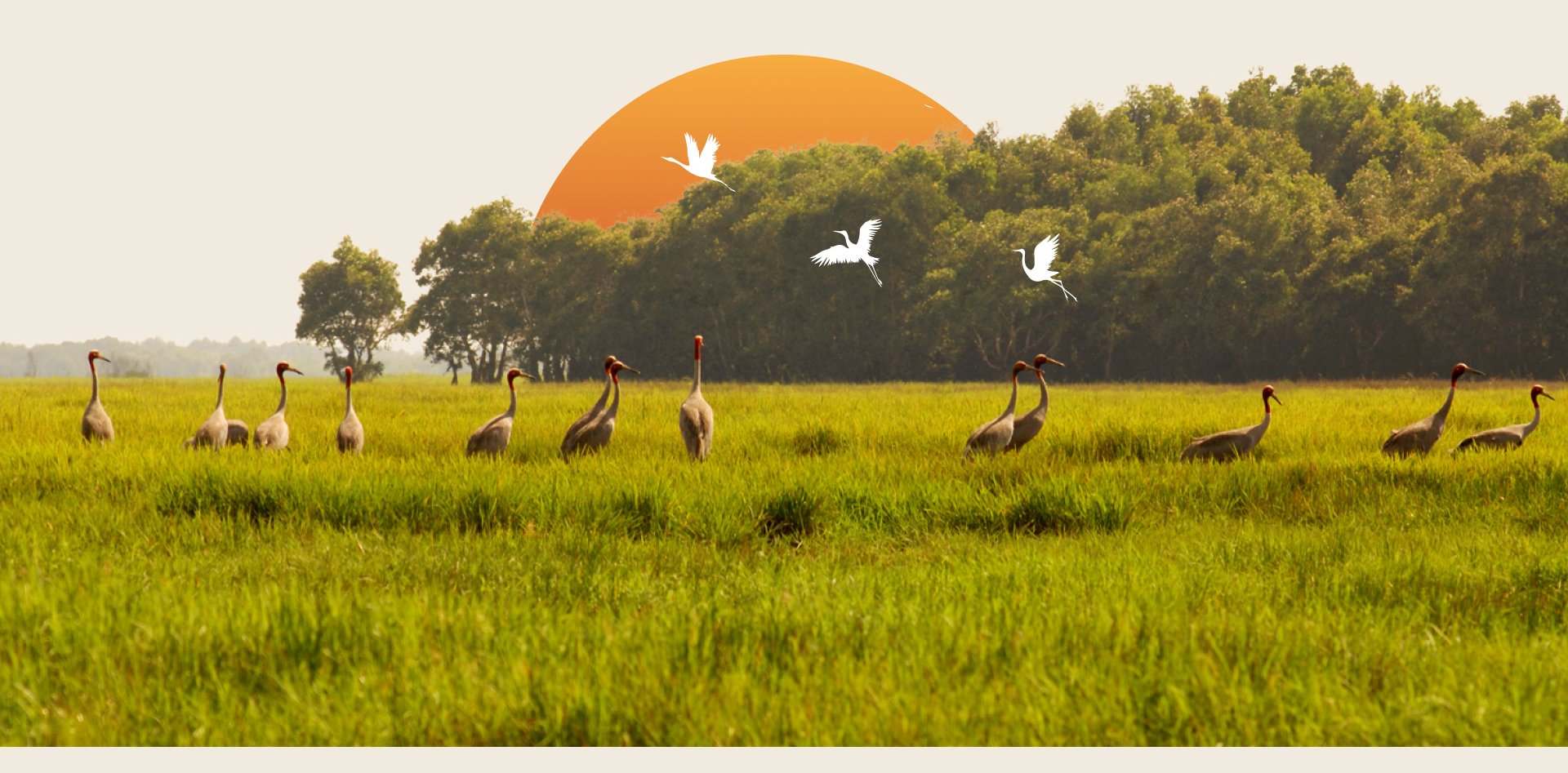
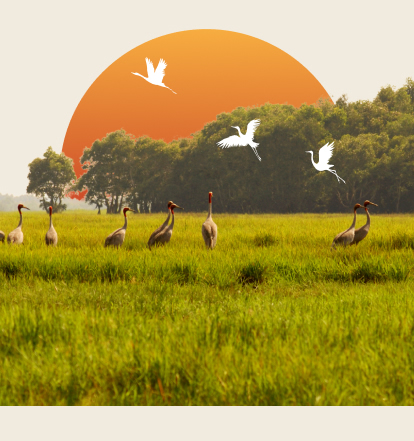
Currently, Dong Thap is designating area A4 of Tram Chim National Park as a place to raise and release cranes into the wild. Surrounding this area is a 1,623-hectare buffer zone where rice will be produced organically instead of using the majority of chemical fertilizers and pesticides as rice producers did in the past.
The model will be implemented in 3 phases from 2023 to 2025, with a total area of 200 hectares and a budget of over VND 13.6 billion. Subsequently, 15 households have been mobilized to register for organic rice farming on nearly 100 hectares in the 2023 summer-autumn crop in the buffer zone area adjacent to area A4 of Tram Chim National Park, aiming to create an ecological environment around the development area of cranes.
In the 2024 summer-autumn rice crop, there are now many households in Phu Duc commune and Tan Cong Sinh commune participating in the organic farming model with an area of about 100 hectares. The rice is currently over 45 days old and in the ripening stage.
Through an organic rice farming model that is eco-friendly and reduces costs, most farmers in the buffer zone of Tram Chim National Park are very supportive of organic rice farming. With stable output for consumption and guaranteed profits, farmers are willing to expand their growing area.
Besides, it also helps improve the livelihoods of people in the buffer zone associated with the program to restore and develop crane flocks, develop tourism in the National Park, and raise awareness of the environmental protection of Melaleuca forests. In parallel, call for the participation of local communities and private businesses.
At the same time, the Dong Thap Provincial People's Committee also directed the province's Department of Culture, Sports and Tourism, along with Tram Chim National Park and related units, to survey and rebuild tours and tourist routes at Tram Chim National Park. Especially, pay attention to people's participation in tourism development and research on building a brand for Tam Nong district associated with the recovery and development of crane tourism.


Mr. Doan Van Nhanh, Deputy Director of the Conservation and International Cooperation Center of Tram Chim National Park, said: Recently, the Dong Thap Provincial People's Committee has just organized a consultation with experts and scientists to come up with a plan to restore the ecosystem of Tram Chim National Park under the Sarus crane conservation project. According to the draft plan of Tram Chim National Park, the goal of phase 1 (2024-2025) is to restore at least 50 hectares of Eleocharis atropurpurea habitat to create a food source for Sarus cranes; 30 hectares of weedy rice, about 70% purebred from the remaining genetic resource; and 20 hectares of Xris indica flowers. At the same time, impact at least 430 hectares in subdivisions A1, A4, and A5 for land reclamation.

Phase 2 (2026-2032) will increase the area of habitats that need to be restored to many times that of Phase 1. The goal is that by 2032, at least 1,500 hectares of habitat will be impacted to improve and restore ecology, creating a food source for cranes.
The conference took expert opinions to ensure harmony between biodiversity conservation and fire prevention and control during the dry season in the park. The pilot water level of phase 1 in area A2 is 155 cm, area A3 is 130 cm, area A4 is 125 cm, and area A5 is 125 cm (based on the level at the culverts).
To specifically implement the development of Sarus cranes and preserve the rare Sarus crane animal at Tram Chim National Park, a working delegation led by Secretary of the Dong Thap Provincial Party Committee Le Quoc Phong has recently come to survey the core area of Tram Chim National Park in areas A1, A4, and A5, where Sarus cranes used to come to look for food. At the same time, mobilize farmers to grow rice organically in the buffer zone serving the crane conservation project. Area A1 alone has an area of nearly 5,000 hectares. This is the core area of Tram Chim National Park, which preserves wetland habitat as a residence and feeding place for water bird species.
According to Mr. Nguyen Van Lam, Director of Tram Chim National Park, area A1 used to be the place where cranes have come to look for food for many consecutive years and is the last place cranes returned in 2021. This is an area located deeply in the core zone of the park, with a diverse ecosystem and mounds rising higher than the water level. In the first phase, the project will stabilize water levels and implement separate treatment methods to improve dry grasslands, aiming to restore Eleocharis atropurpurea and weedy rice fields.
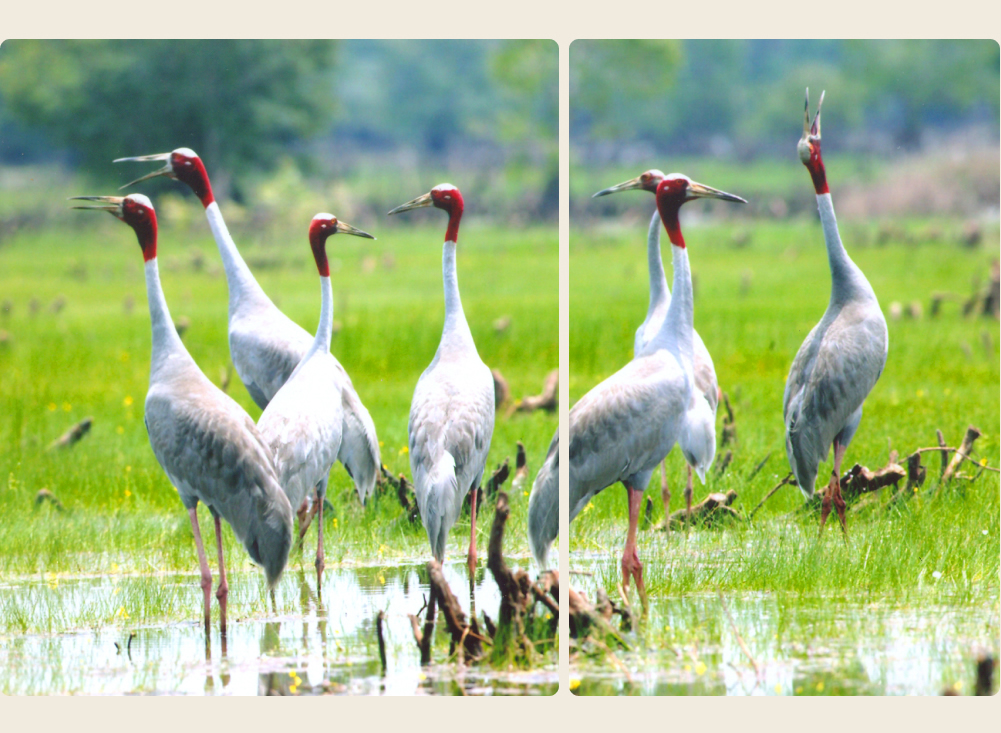
In order for cranes to be able to reside all year round, the water level in the forest is one of the key and most difficult factors to implement because each year there is a high floating season, requiring additional monitoring and calculation. Secretary of the Dong Thap Provincial Party Committee Le Quoc Phong noted that in implementing ecological restoration, the Tram Chim National Park Management Board needs to assess the current water status over the years to proactively control water levels and ensure good ecological restoration, especially the restoration of Eleocharis atropurpurea and weedy rice fields.
Besides, in areas A4 and A5, the Secretary of the Dong Thap Provincial Party Committee also requested that the Management Board of Tram Chim National Park maintain the current status of Melaleuca in this area, aiming to create the best ecosystem and focusing on restoring Melaleuca forests. Revive the natural landscape of Tram Chim National Park to preserve and develop cranes as well as other animals.
Mr. Le Quoc Phong, Secretary of the Dong Thap Provincial Party Committee, emphasized that the core point of the project is to restore the national park's ecosystem as closely as possible to the environment in which cranes can live, aiming to keep the cranes staying and multiplying. When implementing it, it is necessary to maintain the planted Melaleuca forest and consider thinning the regenerated Melaleuca to create an airy landscape and environment as a landing area for cranes.

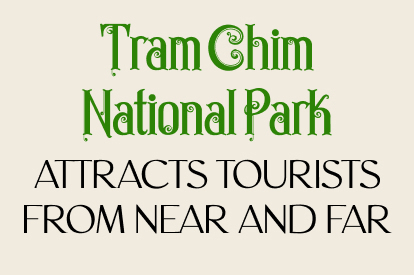
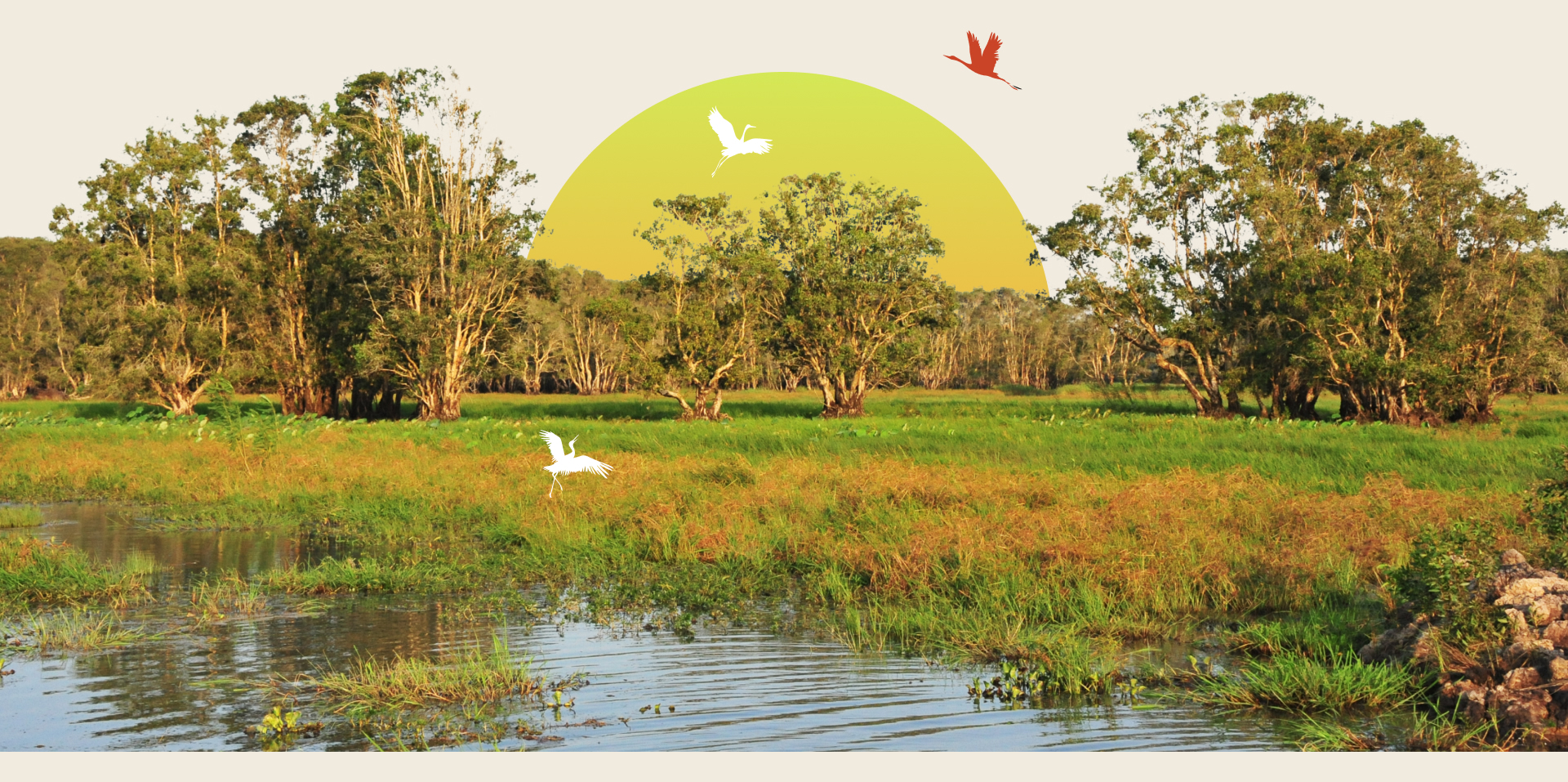

Tram Chim National Park has long been famous for its ecological and agricultural tourism. When tourists come here, they cannot miss the experience of riding a dinghy through the Melaleuca forests at Tram Chim. The feeling of gliding on the water, admiring the beautiful natural landscape, and enjoying the fresh air will bring wonderful moments of relaxation.
In addition to beautiful scenery, Tram Chim National Park also has more than 200 species of birds. Tram Chim is a paradise for those who love bird watching. Tourists have the opportunity to admire and capture wonderful moments of rare bird species in the environment bestowed by nature. Besides, the flora at Tram Chim is also very diverse and rich, with more than 130 different plant species. Tourists can participate in eco-tours to explore green Eleocharis and Cyperus iria fields and ancient Melaleuca forests. Not to mention that, with its beautiful natural landscape, Tram Chim is an ideal destination for "virtual living" believers. Blooming lotus fields, flooded Melaleuca forests, and vast fields of Xyris indica flowers will bring impressive photos.
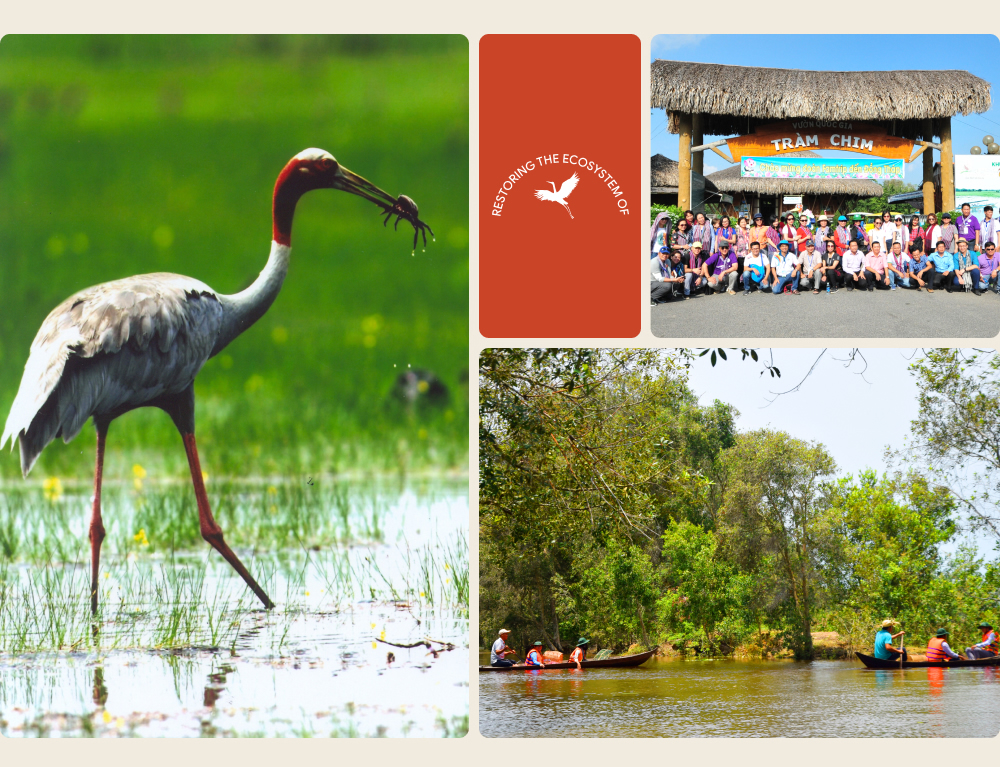
The best time to admire Tram Chim's most beautiful scenery is during the floating season, from September to December every year. At this time, the natural landscape at Tram Chim National Park is extremely peaceful and dreamy, with water filling the fields and Melaleuca forests, creating a vivid and colorful natural picture. In previous years, Sarus cranes also returned to Tram Chim National Park to find food for water chestnuts in February–May every year, but at this time, tourists coming to Tram Chim will be able to admire the impressive dances of the Sarus crane.
Additionally, tourists can participate in activities to explore creatures in the forest, then rest and enjoy delicious dishes made from freshwater fish from around this area. Indeed, Tram Chim National Park is a great destination for those who love to explore and experience nature, with its unique ecosystem and interesting activities. Perhaps at this time, Tram Chim National Park will rest for a while after the recent forest fire incident, but everyone hopes that this nature reserve will soon be healthy again. At that time, tourists will definitely visit Tram Chim National Park to feel the rustic features of the Dong Thap river region, as well as the richness and diversity of Vietnam's nature.
Author: Le Hoang Vu
Design: Nongnghiepvietnam
Photo: Le Hoang Vu - Van Vu
Translated by: Thu Huyen


